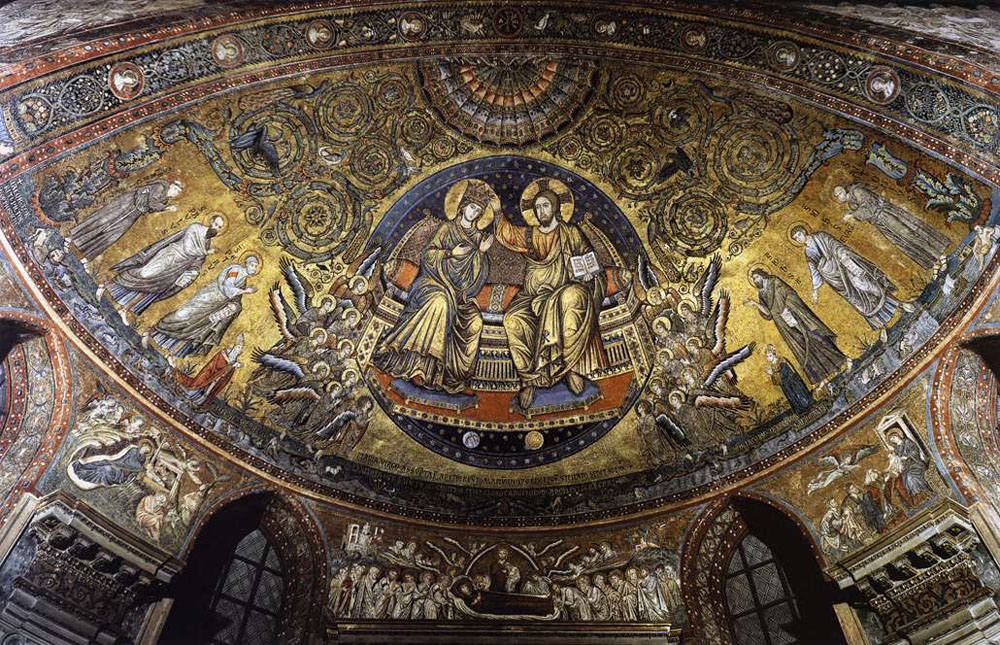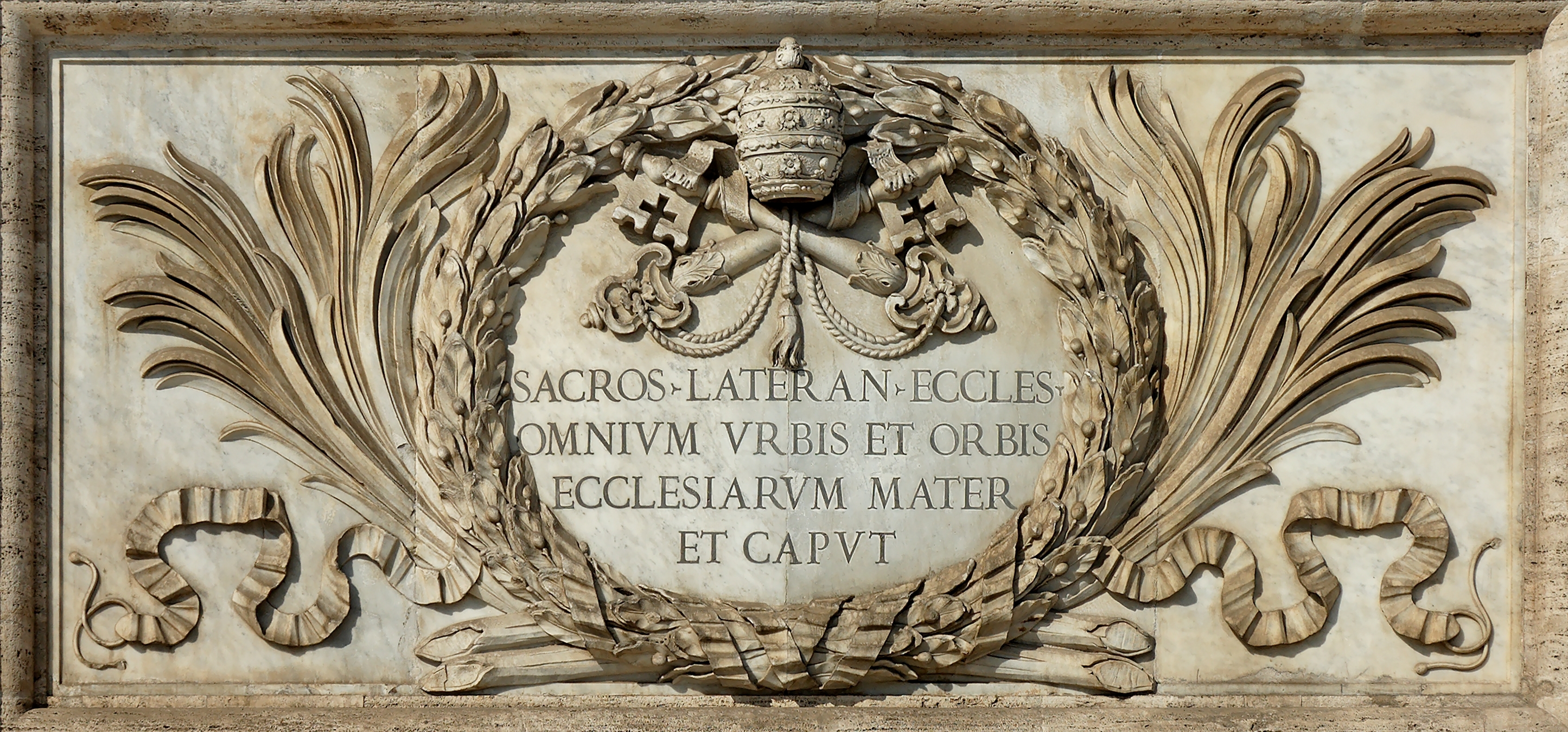|
Jacopo Da Camerino
Jacopo da Camerino was an Italian mosaicist and a Franciscan friar. He was born in Camerino in the Marca of Ancona, and is known to have worked in Rome and Orvieto from 1288 to 1321. He assisted Iacopo Torriti with the apse mosaics for the church of San Giovanni in Laterano, where he is also portrayed. His compositions are in a style similar to that of Cimabue. References * Gothic painters 13th-century births 14th-century deaths {{Italy-painter-14thC-stub ... [...More Info...] [...Related Items...] OR: [Wikipedia] [Google] [Baidu] |
Camerino
Camerino is a town in the province of Macerata, Marche, central-eastern Italy. It is located in the Apennines bordering Umbria, between the valleys of the rivers Potenza and Chienti, about from Ancona. Camerino is home to the University of Camerino, founded in the Middle Ages. History Camerino occupies the site of the ancient Camerinum, the inhabitants of which (Camertes Umbri or Umbrii-Camertii) became allies of the Romans in 310 BC or 309 BC (at the time of the attack on the Etruscans in the Ciminian Forest). On the other hand, the Katspriot referred to in the history of the year 295 BC are probably the inhabitants of Clusium. Later it appears as a dependent autonomous community with the , an "equal" treaty with Rome (Mommsen, ''Römisches Staatsrecht'', iii. 664). Two cohorts of fought with distinction under Gaius Marius against the Cimbri. It was much affected by the conspiracy of Catiline, and is frequently mentioned in the Civil Wars; under the empire it was a municipi ... [...More Info...] [...Related Items...] OR: [Wikipedia] [Google] [Baidu] |
Iacopo Torriti
Jacopo Torriti or Turriti was an Italian painter and mosaic maker who lived in the 13th century. He worked in the decoration especially in the apse of San Giovanni in Laterano and Santa Maria Maggiore in Rome. Those in the Lateran were carried out in conjunction with the Franciscan friar, Jacopo Camerino. They were executed between the years 1287 and 1292, and though in imitation of the style of Cimabue. There are no written documents about his life. In 1291 he signed the apse mosaics in the basilica San Giovanni in Laterano in Rome, which was nearly all redone in 1878. The mosaics of the apse in Santa Maria Maggiore were executed by him in 1295. They depict the Coronation of the Virgin by Christ in a large medallion. The medallion is encircled with a sprawling floral ornament with flowers, birds and animals, this probably original from the 4th century. In the lower strip of the mosaic we can see the standing figures of St Peter, St Paul and Pope Nicholas IV (left side), an ... [...More Info...] [...Related Items...] OR: [Wikipedia] [Google] [Baidu] |
Mosaics
A mosaic is a pattern or image made of small regular or irregular pieces of colored stone, glass or ceramic, held in place by plaster/mortar, and covering a surface. Mosaics are often used as floor and wall decoration, and were particularly popular in the Ancient Roman world. Mosaic today includes not just murals and pavements, but also artwork, hobby crafts, and industrial and construction forms. Mosaics have a long history, starting in Mesopotamia in the 3rd millennium BC. Pebble mosaics were made in Tiryns in Mycenean Greece; mosaics with patterns and pictures became widespread in classical times, both in Ancient Greece and Ancient Rome. Early Christian basilicas from the 4th century onwards were decorated with wall and ceiling mosaics. Mosaic art flourished in the Byzantine Empire from the 6th to the 15th centuries; that tradition was adopted by the Norman Kingdom of Sicily in the 12th century, by the eastern-influenced Republic of Venice, and among the Rus. Mosaic fell ou ... [...More Info...] [...Related Items...] OR: [Wikipedia] [Google] [Baidu] |
San Giovanni In Laterano
The Archbasilica Cathedral of the Most Holy Savior and of Saints John the Baptist and John the Evangelist in the Lateran ( it, Arcibasilica del Santissimo Salvatore e dei Santi Giovanni Battista ed Evangelista in Laterano), also known as the Papal Archbasilica of Saint John nLateran, Saint John Lateran, or the Lateran Basilica, is a Catholic cathedral church of the Diocese of Rome in the city of Rome, and serves as the seat of the bishop of Rome, the pope. The archbasilica lies outside of Vatican City proper, which is located approximately to the northwest. Nevertheless, as properties of the Holy See, the archbasilica and its adjoining edifices enjoy an extraterritorial status from Italy, pursuant to the terms of the Lateran Treaty of 1929. The church is the oldest and highest ranking of the four major papal basilicas as well as one of the Seven Pilgrim Churches of Rome, holding the unique title of "archbasilica". Founded in 324, it is the oldest public church in the city of Ro ... [...More Info...] [...Related Items...] OR: [Wikipedia] [Google] [Baidu] |
Cimabue
Cimabue (; ; – 1302), Translated with an introduction and notes by J.C. and P Bondanella. Oxford: Oxford University Press (Oxford World’s Classics), 1991, pp. 7–14. . also known as Cenni di Pepo or Cenni di Pepi, was an Italian painter and designer of mosaics from Florence. Although heavily influenced by Byzantine models, Cimabue is generally regarded as one of the first great Italian painters to break from the Italo-Byzantine style. While medieval art then was scenes and forms that appeared relatively flat and highly stylized, Cimabue's figures were depicted with more advanced lifelike proportions and shading than other artists of his time. According to Italian painter and historian Giorgio Vasari, Cimabue was the teacher of Giotto, the first great artist of the Italian Proto-Renaissance. However, many scholars today tend to discount Vasari's claim by citing earlier sources that suggest otherwise. Life Little is known about Cimabue's early life. One source that recou ... [...More Info...] [...Related Items...] OR: [Wikipedia] [Google] [Baidu] |
Gothic Painters
Gothic or Gothics may refer to: People and languages *Goths or Gothic people, the ethnonym of a group of East Germanic tribes **Gothic language, an extinct East Germanic language spoken by the Goths **Crimean Gothic, the Gothic language spoken by the Crimean Goths, also extinct ** Gothic alphabet, one of the alphabets used to write the Gothic language **Gothic (Unicode block), a collection of Unicode characters of the Gothic alphabet Art and architecture *Gothic art, a Medieval art movement *Gothic architecture *Gothic Revival architecture (Neo-Gothic) **Carpenter Gothic ** Collegiate Gothic **High Victorian Gothic Romanticism *Gothic fiction or Gothic Romanticism, a literary genre Entertainment * ''Gothic'' (film), a 1986 film by Ken Russell * ''Gothic'' (series), a video game series originally developed by Piranha Bytes Game Studios ** ''Gothic'' (video game), a 2001 video game developed by Piranha Bytes Game Studios Modern culture and lifestyle * Goth subculture, a music-cu ... [...More Info...] [...Related Items...] OR: [Wikipedia] [Google] [Baidu] |
13th-century Births
The 13th century was the century which lasted from January 1, 1201 ( MCCI) through December 31, 1300 ( MCCC) in accordance with the Julian calendar. The Mongol Empire was founded by Genghis Khan, which stretched from Eastern Asia to Eastern Europe. The conquests of Hulagu Khan and other Mongol invasions changed the course of the Muslim world, most notably the Siege of Baghdad (1258), the destruction of the House of Wisdom and the weakening of the Mamluks and Rums which, according to historians, caused the decline of the Islamic Golden Age. Other Muslim powers such as the Mali Empire and Delhi Sultanate conquered large parts of West Africa and the Indian subcontinent, while Buddhism witnessed a decline through the conquest led by Bakhtiyar Khilji. The Southern Song dynasty would begin the century as a prosperous kingdom but would eventually be invaded and annexed into the Yuan dynasty of the Mongols. The Kamakura Shogunate of Japan would be invaded by the Mongols. Goryeo ... [...More Info...] [...Related Items...] OR: [Wikipedia] [Google] [Baidu] |



